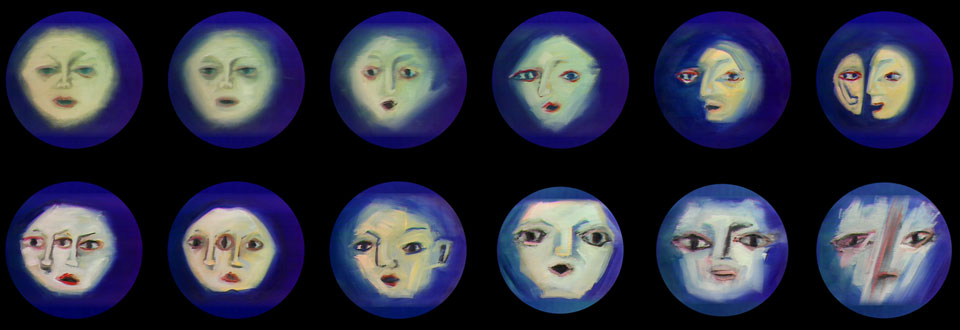Face

Films and Videos
Double Trouble
Swedish Meatballs
Beethoven
Memory Breakdown
Roommate
Rudolf Tschäpe
Seeds
Surrender
The Red Orchestra
The Silence
Zaar
Transformation
So Into You
Die Dicke
Info
Explicación en Español abajo.
Stefan Roloff about the Moving Painting technique:
„Two Van Dyck Portraits titled „Genovese Couple“ hang next to each other in Berlin’s Gemäldegalerie. When you step in front of them, they look straight at you. They have a soul, as though two real people were in the room. For a long time, I wondered how Van Dyck and a few other painters managed to achieve such an effect. They took their time, painting for weeks or months. Sometimes the model came in a happy mood, sometimes somber, talkative or silent. And inevitably, the painters added their own moods. Viewing the final painting, we automatically perceive the life of the layers beneath.
I wanted to realize this concept through a video. Paintings are built spatially, videos through time. A painting’s layers lie on top of each other, a video’s frames next to each other. In 1984, at the New York Institute of Technology I filmed 900 successive layers of an imaginary portrait on a single canvas. Later, they were edited into a 3- minute sequence that loops backwards, resulting in the six minute- piece „Face“, my first Moving Painting.
The second work followed in 1986. „Lunch“ equally morphs with time, creating a narrative flow. Often, while working on a painting, painters change their mind. A chair can become a tree, a person a sky. Along such visual lines, „Lunch“ follows the changes of a human relationship. After adding its sound track, the video was re- named „Zaar“ in 1986.
„Still Life“ was inspired by Webster’s definition of „an inanimate object“. I asked myself how anything could be inanimate on a planet that’s constantly in motion. Inspired by this absurd insight, the video is a traditional still life, going through changes.
From 1989 on, too many people had started to work in styles, similar to the one I had developed and I decided to dedicate myself to new things. However, through invitations, two more pieces followed.
„The Visit“ was filmed in 1989 on HD video. HD was in its beginning steps. Its cameras were clumsily large and because of the lack of HD monitors, there was no apparent use for it. However, the picture quality fascinated me. I painted on a moveable wooden relief, creating a motion, not just of the paint but of its support, as well. The work has a simple, narrative concept: A space alien comes to earth. His observation is that people only seem to fill their cars with gas. So, he leaves again.
„Sunstroke“ was my last Moving Painting in 1992. At just over one minute, it is the shortest with a more complex narrative: After a stroll in the woods, a man experiences a disastrous rain, followed by the destruction of a city. „Sunstroke“ was painted on a long, rectangular canvas. Its layers don’t only rest on top of each other, the camera pans sideways in small steps with each frame, accompanying the man’s walk.
With the exception of „Sunstroke“, all Moving Paintings are loops. They end with the same image with which they began.“
Explicación del proceso en Español por el programa Metropolis, 1990.
Credits
Title: Face / Dominic Christ
Director: Stefan Roloff
Year: 1984 / 1987
Genre: Music Video
Executive Producer: Stefan Roloff
Co-producer:
Peter Gabriel
New York Institute of Technology
Music: Suicide
(Alan Vega, Martin Rev)
Special Effects: Eric Spiegel
Format: 1″ video
Length: 2:30 min.
